Gustav Klimt painted eye-catching works for the University of Vienna’s ceiling between 1900 and 1907. These paintings caused quite a stir when they were first shown.
The University asked Klimt to make five paintings for the Great Hall’s ceiling, with each one showing a different school subject.
Klimt’s bold style didn’t sit well with everyone. His paintings for the university were very different from what people expected. They used lots of symbols and showed things in new ways. This made some people upset, while others loved the fresh look.
Sadly, we can’t see these paintings in person today. They may have been destroyed during World War II. But the story of Klimt’s ceiling paintings still fascinates art fans. It shows how new ideas in art can shake things up and make people think.
Gustav Klimt: The Mastermind Behind the Murals
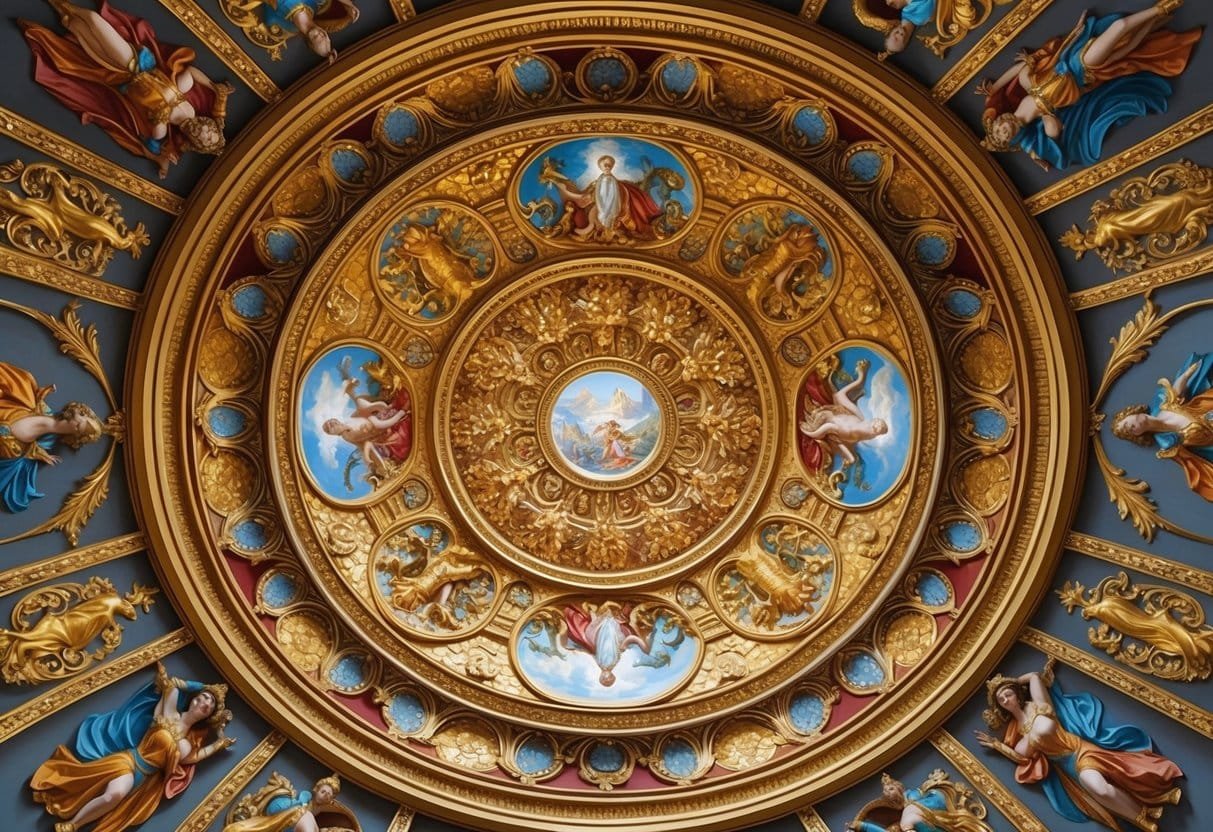
Gustav Klimt, a leading figure in the Vienna Secession movement, was the creative genius behind the University of Vienna ceiling paintings. In 1894, he and his colleague Franz Matsch received a commission to decorate the university’s grand assembly hall.
Klimt took on the task of creating three of the five planned paintings. These works would represent the faculties of Philosophy, Medicine, and Jurisprudence.
The artist’s unique style shone through in these pieces. He blended symbolism and allegory to create thought-provoking images. Klimt’s bold use of color and intricate patterns became hallmarks of his work.
Unfortunately, Klimt’s vision for the murals was not warmly received. His paintings faced criticism for being too provocative and even pornographic. This reaction highlighted the clash between traditional academic art and Klimt’s modern approach.
Despite the controversy, these paintings played a crucial role in Klimt’s artistic journey. They showcased his evolving style and his willingness to challenge societal norms through art.
Historical Context of the University Paintings

In 1894, the University of Vienna commissioned Gustav Klimt to create a series of paintings for its Great Hall ceiling. This project was meant to celebrate the university’s importance and showcase its main faculties.
Klimt was tasked with creating three paintings representing Medicine, Philosophy, and Jurisprudence. These works, along with a central piece, became known as the Faculty Paintings.
The paintings were finished between 1900 and 1907. They sparked controversy due to their bold, modern style. Many critics and faculty members found them too provocative and unclear.
Despite the criticism, Klimt’s works gained admirers and became important examples of early modern art. Sadly, they never found a permanent home at the university.
During World War II, the Nazis took control of the paintings. In 1945, as the war was ending, they were moved to Immendorf Castle in Austria for safekeeping.
Tragically, retreating SS forces set fire to the castle. The Faculty Paintings were destroyed in the blaze, along with other valuable artworks.
Today, these lost masterpieces are remembered through photographs and studies. They remain an important part of Klimt’s legacy and Vienna’s artistic history.
The Ceiling Paintings Explained
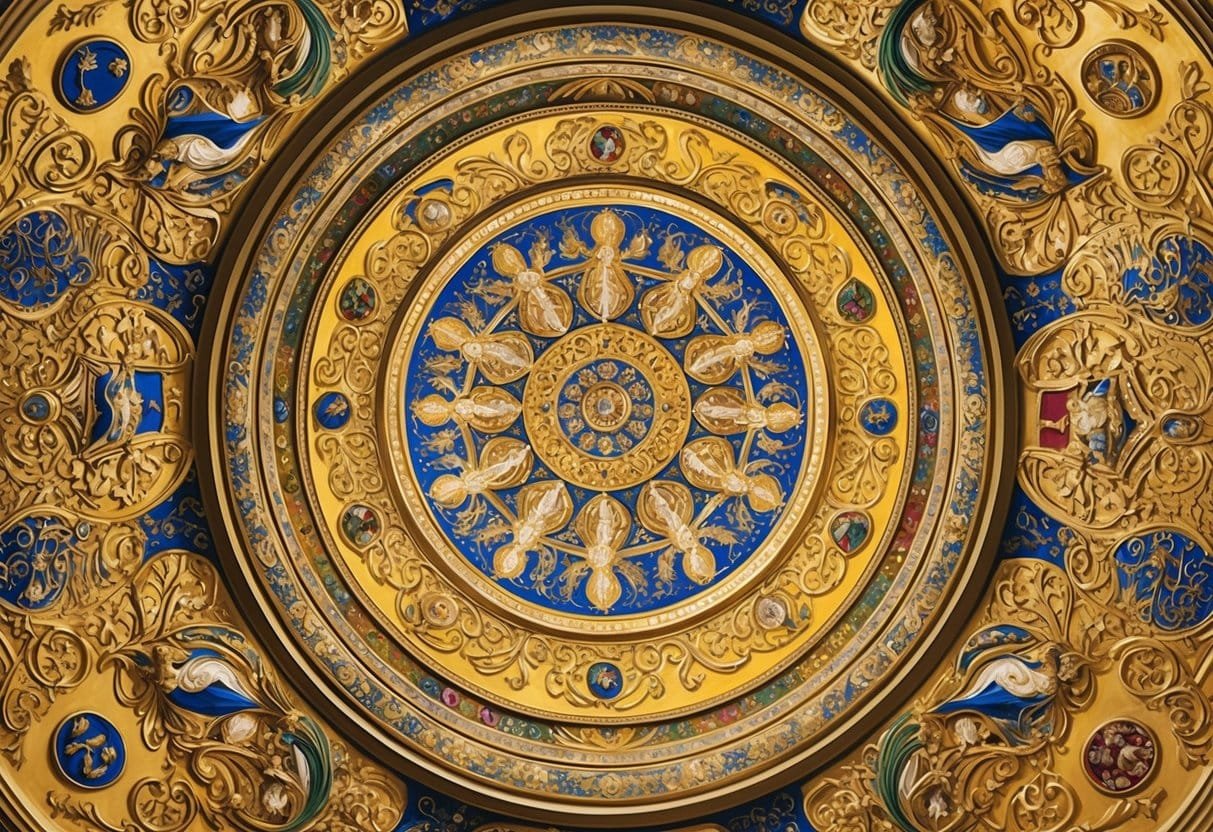
Gustav Klimt created three famous ceiling paintings for the University of Vienna. These works caused quite a stir when they were first shown. Let’s look at each one in detail.
Medicine
The Medicine painting shows a group of figures floating in a dreamy scene. At the center is Hygeia, the goddess of health. She holds a snake, which is a symbol of medicine.
Below her, a river of nude bodies represents the cycle of life and death. Some figures look healthy, while others seem sick or dying. This mix of life and death shocked many people when they first saw it.
Klimt painted a skeleton to show death clearly. He also included a pregnant woman to represent new life. These bold choices made the painting very controversial at the time.
Philosophy
The Philosophy painting is full of mystery and deep ideas. It shows a group of people in a dark, foggy space. They seem to be searching for meaning in life.
At the center is a bright face. This face might represent knowledge or wisdom. Around it, shadowy figures reach out, trying to understand the world around them.
Klimt used lots of dark colors in this painting. The mood feels serious and a bit scary. He wanted to show how hard it can be to figure out big questions about life.
Jurisprudence
The Jurisprudence painting looks at the idea of justice. It shows three women who represent Truth, Justice, and Law. Below them is a man being punished.
The man looks small and weak compared to the powerful women above him. This might show how people can feel when facing the legal system.
Klimt used bright, shiny gold in parts of this painting. But he also used dark colors to create a tense mood. The mix of beauty and fear makes this work very striking.
Controversies and Public Reception
Gustav Klimt’s ceiling paintings for the University of Vienna caused quite a stir when they were unveiled. The public and art critics had strong opinions about these works.
Many people found the paintings shocking. They thought the images were too bold and different from what they expected to see in a university.
Some even called the paintings pornographic. This upset a lot of folks who felt the art was not proper for a school setting.
The uproar led to a big scandal. Klimt’s work became the talk of the town, but not always in a good way.
Not everyone disliked the paintings, though. Some people thought they were amazing and praised Klimt’s skill.
The artist himself stood by his work. He believed in his vision and didn’t want to change it, even when faced with harsh criticism.
In the end, the controversy around these paintings helped make Klimt even more famous. It showed how art can stir up strong feelings and spark important talks about what belongs in public spaces.
Symbolism and Artistic Influences
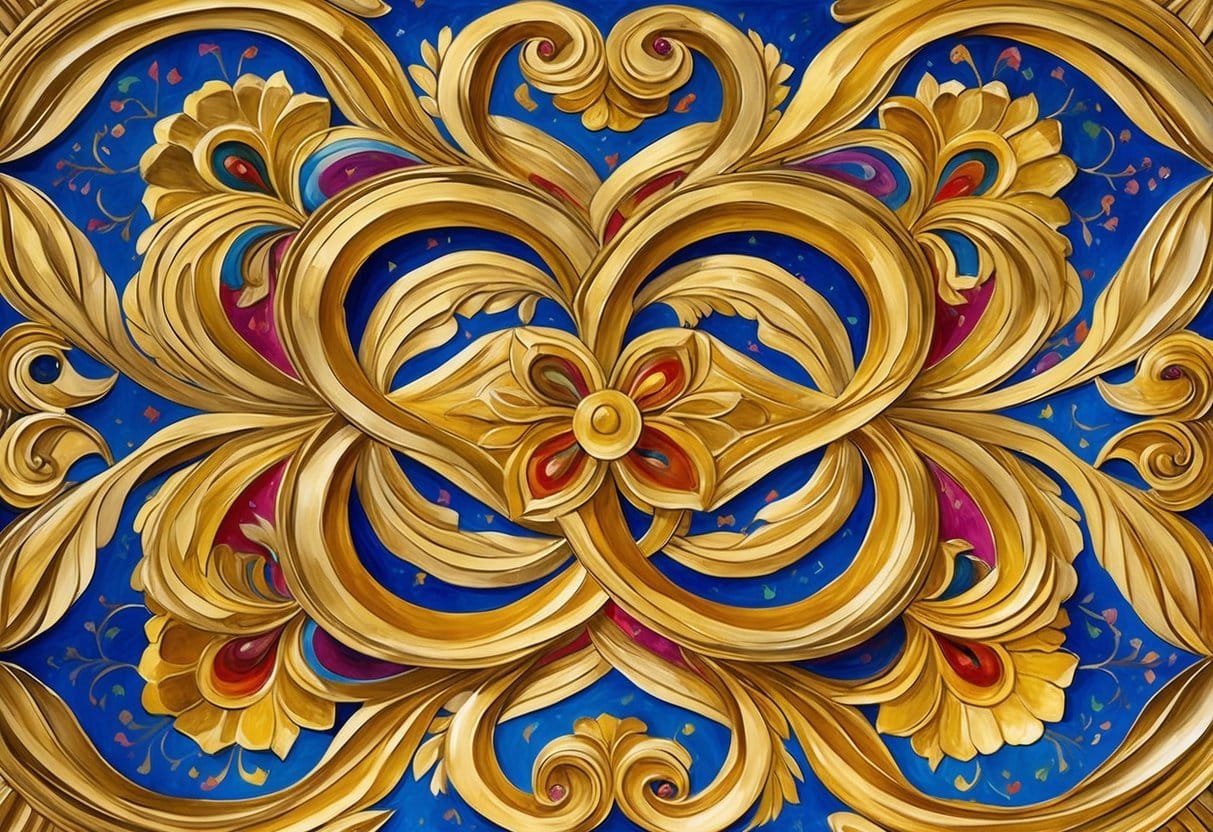
Gustav Klimt’s University of Vienna ceiling paintings are rich in symbolism and artistic influences. The works blend elements from various sources to create unique, thought-provoking pieces.
Klimt drew inspiration from Greek mythology and ancient symbols. He used these to represent complex ideas about life, death, and knowledge.
One key symbol is the Aesculapian snake. This creature appears in the “Medicine” painting. It wraps around the arm of Hygieia, the goddess of health. The snake represents healing and renewal.
The Cup of Lethe is another important symbol. It appears in the “Jurisprudence” painting. This mythical cup makes people forget their past. Klimt uses it to show how justice can offer a fresh start.
Klimt’s work with the Vienna Secession group also influenced these paintings. The group’s focus on breaking from tradition is clear in Klimt’s bold style and unconventional compositions.
The idea of transcendence runs through all the paintings. Klimt uses floating figures and dreamlike scenes to show a world beyond everyday reality.
Techniques and Artisanship
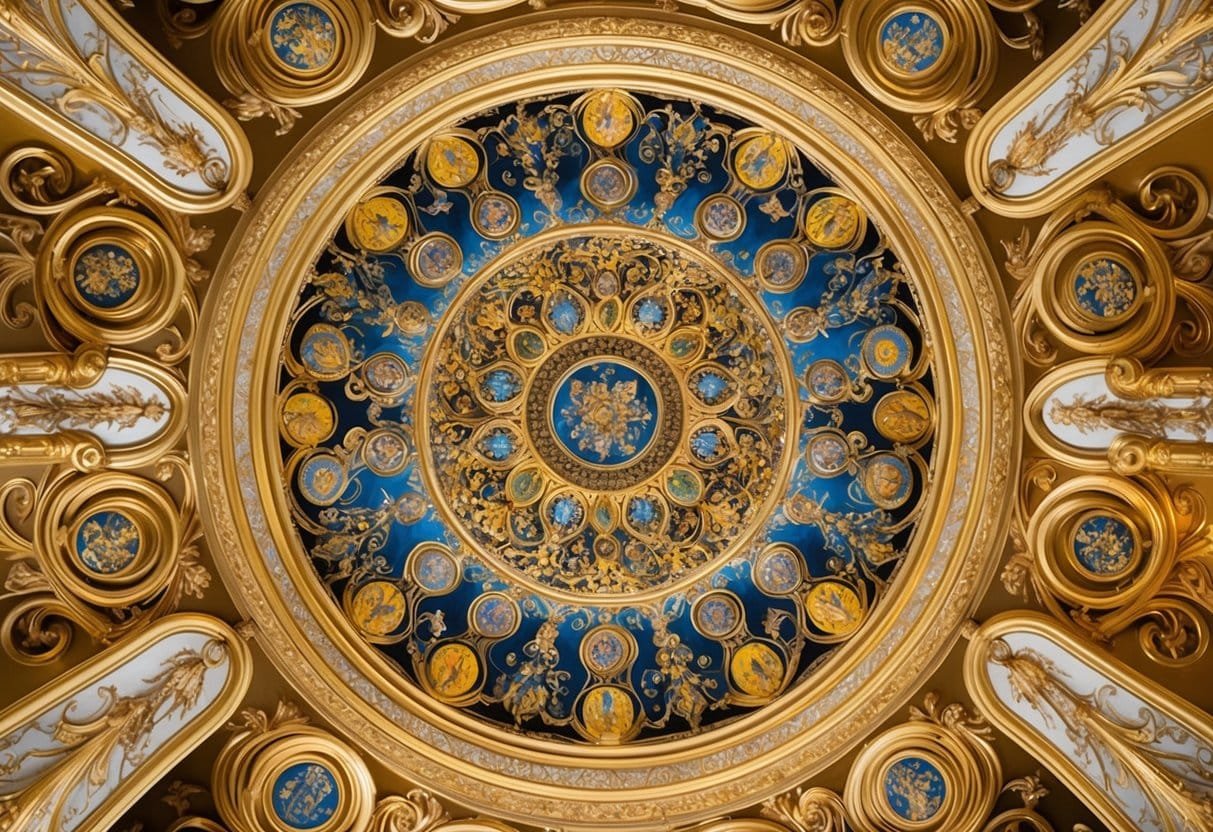
Gustav Klimt used unique methods to create his University of Vienna ceiling paintings. He combined traditional techniques with new artistic approaches.
Klimt’s work showed strong Art Nouveau influences. This style featured flowing lines and natural forms. He used these elements to make his paintings eye-catching and modern.
One of Klimt’s favorite techniques was the use of gold leaf. He applied thin sheets of gold to parts of his paintings. This gave them a shimmering, luxurious look.
Klimt loved patterns. He filled his paintings with intricate designs. These patterns often covered entire sections of the artwork.
The artist also used a patchwork style. He combined different textures and colors to create a rich visual tapestry.
Klimt’s brushwork was bold and expressive. He used thick paint in some areas and thin washes in others. This variety added depth to his paintings.
The ceiling paintings showed Klimt’s skill with human figures. He painted bodies in realistic and stylized ways. This mix of styles made his work stand out.
Klimt’s techniques were ahead of his time. They shocked some people but inspired many others. His innovative approach helped make these paintings famous.
Klimt’s Relation with the Vienna Secession Movement
Gustav Klimt played a key role in the Vienna Secession, an artistic movement that began in 1897. He was one of its founders and served as its first president.
The Secession aimed to break free from traditional artistic styles. Klimt embraced this idea wholeheartedly. His unique style flourished during this time.
Klimt’s work became a symbol of the Secession’s ideals. He created bold, innovative pieces that challenged the norm. His art often shocked viewers with its daring themes and striking visuals.
One of Klimt’s most famous works from this period is the Beethoven Frieze. This large mural showcased his distinctive style and the Secession’s principles.
The Secession gave Klimt a platform to showcase his art. He used their exhibitions to present his latest paintings to the public. This helped him gain recognition and push artistic boundaries.
Klimt’s relationship with the Secession wasn’t always smooth. In 1905, he left the group due to disagreements. But his time with the movement had a lasting impact on his art and career.
The Destruction and Preservation Efforts
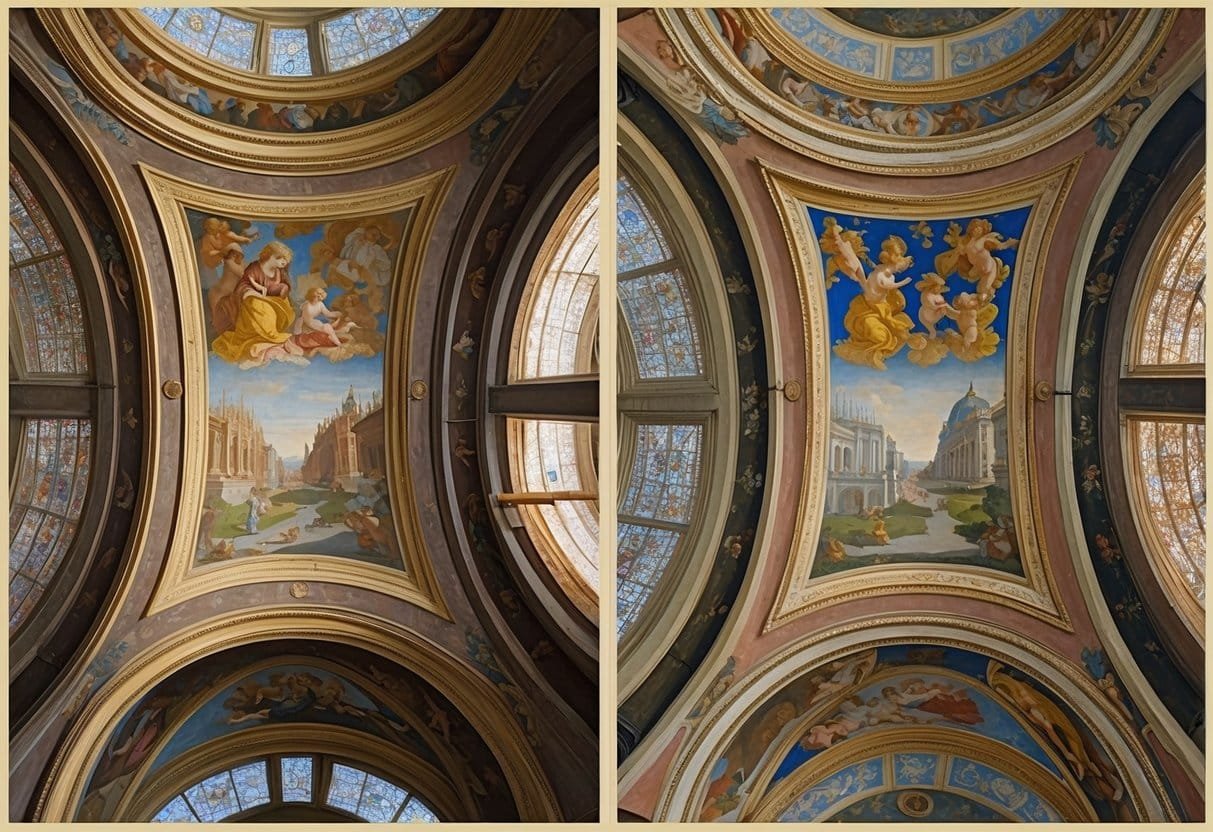
Gustav Klimt’s ceiling paintings for the University of Vienna met a tragic fate. During World War II, many of Klimt’s works were in danger.
In 1945, the Nazis stored some of Klimt’s paintings at Schloss Immendorf. Sadly, they set fire to the castle as they retreated, destroying these masterpieces.
The original ceiling paintings were lost forever. But efforts to preserve Klimt’s legacy continued.
Today, you can see reproductions of the Faculty Paintings. The Leopold Museum in Vienna displays full-size, black-and-white photos of these works.
The Österreichische Galerie also houses some of Klimt’s surviving sketches and studies. These give us a glimpse into his creative process.
Recent technology has breathed new life into the lost paintings. Artificial intelligence has been used to add color to old photos, letting us imagine how they once looked.
While the originals are gone, Klimt’s ceiling paintings live on through these preservation efforts. They continue to inspire art lovers around the world.
Key Themes Within the University of Vienna Paintings
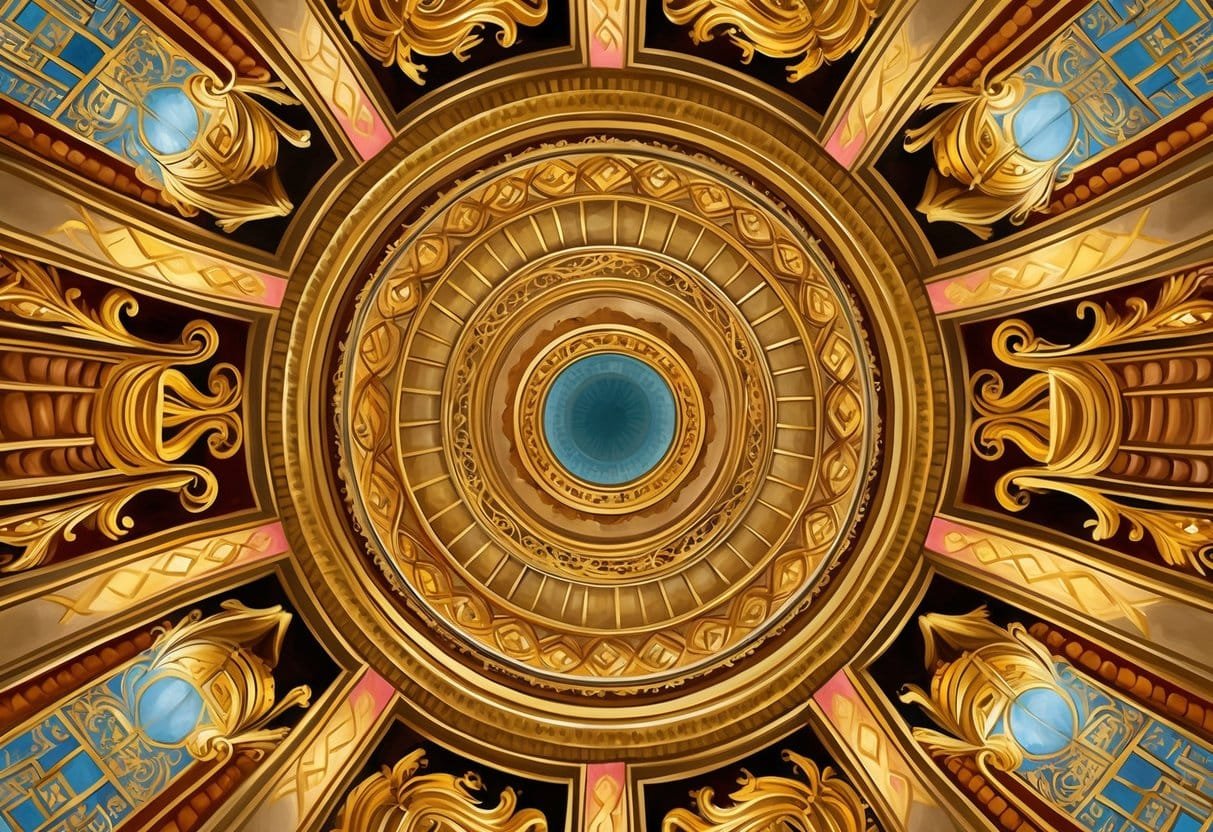
Gustav Klimt’s Faculty Paintings for the University of Vienna explored deep themes. These works touched on life, death, and the pursuit of knowledge.
The painting “Philosophy” showed floating figures in a dreamlike state. It represented the cycle of life and death. Klimt used dark colors to create a mysterious mood.
“Medicine” focused on the theme of health and healing. It showed a figure of Hygieia, the goddess of health. Around her, Klimt painted bodies in various states of illness and recovery.
“Jurisprudence” dealt with justice and mortality. It depicted three furies surrounding a criminal. This painting explored how laws affect human life.
Klimt’s use of nude figures in these paintings caused controversy. Many found them too bold for a university setting. But these nudes helped Klimt express ideas about human existence.
The paintings blended realistic and symbolic elements. This style let Klimt show complex ideas about knowledge and human experience. He used gold leaf and intricate patterns to add richness to the works.
Sadly, these legendary paintings were destroyed in a fire in 1945. Only black and white photos remain. But their themes and impact on art history live on.
Comparisons with Other Works by Klimt
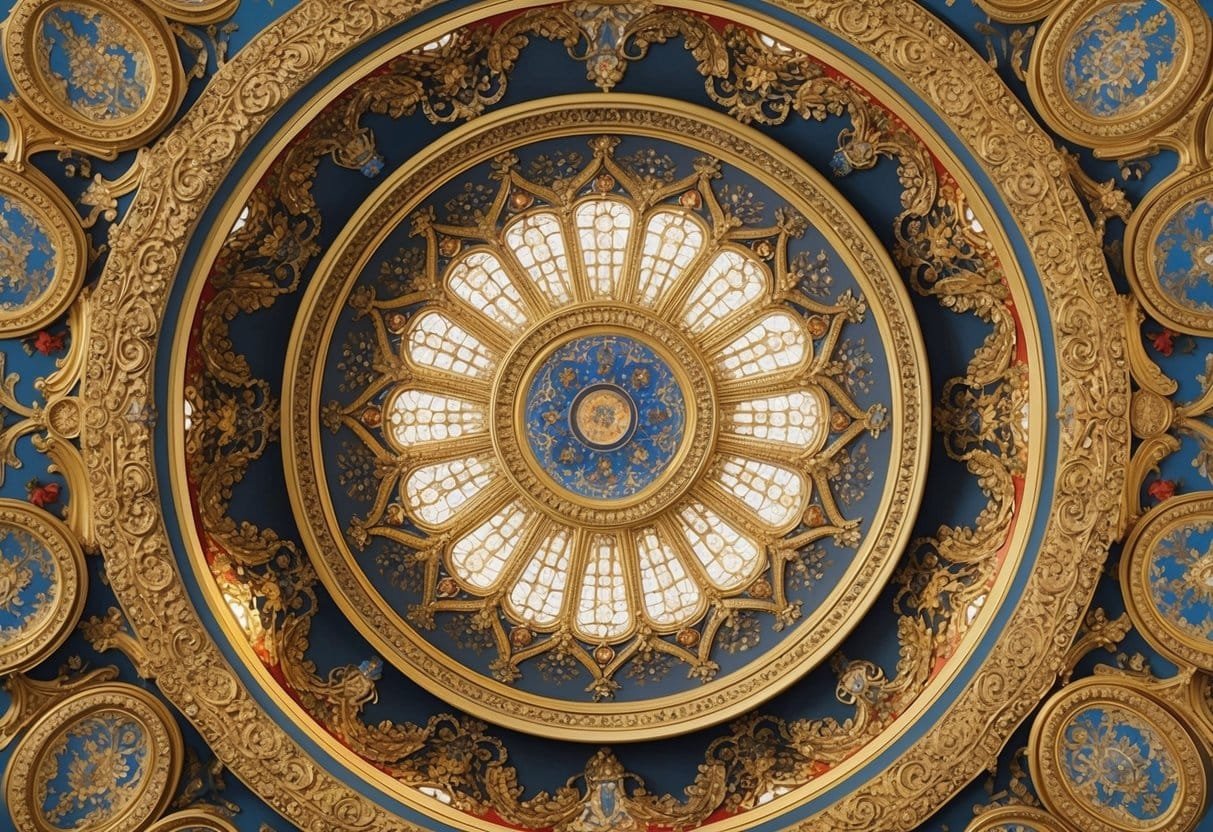
Gustav Klimt’s University of Vienna ceiling paintings share some similarities with his other famous works. Like many of his pieces, these paintings focus on the female form.
Klimt often painted women in various stages of life. His work “Death and Life” shows similarities to the ceiling paintings. Both feature symbolic figures and explore big ideas about human existence.
The ceiling paintings have a different feel from Klimt’s golden phase works. They use darker colors and more complex compositions. Still, they show his skill at painting the human body, especially women.
Klimt’s interest in mothers and babies appears in many works. The ceiling paintings include images of women and infants. This theme connects them to pieces like “Hope II” which shows a pregnant woman.
His later landscapes are quite different from the ceiling paintings. But they all show Klimt’s love of rich colors and patterns. The ceiling works hint at the decorative style he would become famous for.
Impact and Legacy in Modern Art
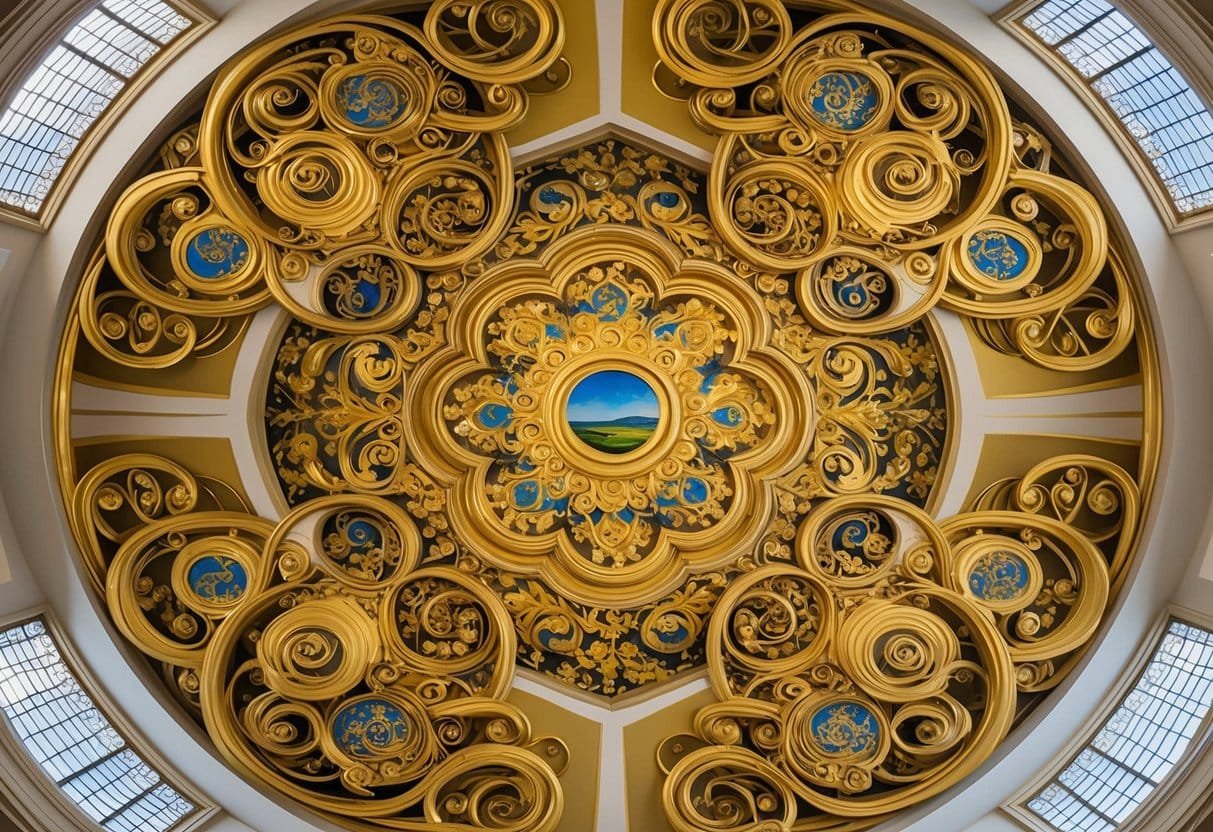
Gustav Klimt’s University of Vienna ceiling paintings left a big mark on the art world. Even though they caused trouble when first shown, they helped shape modern art.
The paintings mixed different styles like Art Nouveau and Symbolism. This blend of ideas inspired other artists to try new things.
Sadly, a fire destroyed the original paintings. But their influence lives on. Modern technology has brought them back to life in a way. Google’s AI project recreated the lost works in color.
Klimt’s bold use of gold and detailed patterns changed how people saw art. His work showed that art could be both beautiful and thought-provoking.
The ceiling paintings sparked talks about art’s role in society. They made people think about big ideas like science and knowledge.
Today, Klimt’s work is loved around the world. His unique style, seen in these paintings, continues to inspire artists and art lovers alike.

